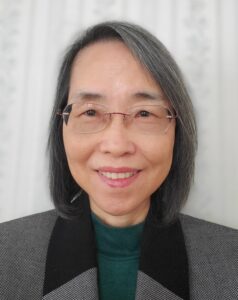co-learning
Select an item by clicking its checkbox
One exercise that has sustained me throughout these last three years of a global pandemic has been writing letters to my Beloveds. As a child who was always on the move, inhabiting la frontera, physically and intellectually, writing to friends in my home country was a way to remain grounded ...
As a toddler, the Grammy-winning musician esperanza spalding heard Yo-Yo Ma play cello on Mister Roger’s Neighborhood and decided she wanted to play music like that. In an interview, she said it was Ma’s “total body activism during the music” that captivated her. A jazz-bassist, vocalist, and composer, ...
I recently read Valarie Kaur’s remarkable book, See No Stranger: A Memoir and Manifesto of Revolutionary Love. At one point in her story, she describes her struggle to find herself “inside the law” at Yale Law School as a Sikh woman with communal commitments to justice developed in a ...

From the Confucian Way to Collaborative Knowledge Co-Construction (New Directions for Teaching and Learning, Number 142)
Date Reviewed: April 15, 2016
The five essays in this volume – on outcomes-based collaborative teaching, learning, and “authentic” assessment, and “connectivist” (86-87) uses of technology and media – are written for Western educators teaching in Asian contexts, but also for teachers in U. S. higher education. The volume is beautifully organized, with short summaries before each essay, as well as strong visuals – charts and illustrations – that summarize information and suggest application. The essays are individually valuable, but they do make a whole volume.
The metaphor that the editors use for teaching and learning is choreography, “the rhythmic dance evolving between instructor and learner in the educational setting within higher education” (1). The teacher is a facilitator, moving students through “challenges and uncertainties,” with an emphasis on collaboration, in the Asian classroom.
Tieyuan Guo’s introductory essay sets up the discussion, as it examines learning styles of students in and from Confucian Heritage Cultures (CHC). In CHC, students tend to be pragmatic learners (7), motivated by concrete outcomes. Confucian teaching emphasized ren, the cultivation of the human person, throughout a lifetime, towards virtue. The social, practical application of ren was in examinations (keju) used to identify and to promote government officials. This resulted in CHC students’ orientation to passing examinations that led to upward social mobility. Though the Confucian system officially ended in 1905, the understanding remains. CHC students, therefore, put more effort into study than their Western peers (9), and the student persona is different than the Western student.
Confucian education values active silence in the classroom, indicating reflection and attentiveness; memorization, mastery, and understanding before application and critical analysis. Silence also involves respect for authority. These may combine to create only “surface learning” (14-15), leading CHC students to so worry about understanding that they do not move to critical thinking and about “losing face” that they do not ask questions.
Non-Asian instructors should develop cultural understanding and sensitivity to make sure that CHC students learn. As van Schalkwyk illustrates, in a useful chart, an Asian student raised in a CHC culture accepts rules and hierarchy and prefers high levels of structure. A CHC student may need time in learning; therefore, group discussions and in-class assignments that a non-Asian student might enjoy may generate stress for the Asian student. In the third chapter, van Schalkwyk suggests ways to construct learning activities so as to be sensitive to CHC cultural realities. The fourth essay suggests linking activities to “authentic assessment,” in performance-based, sequential, and interlinked activities that move students towards higher-order cognitive processes (75). The final chapter examines the uses of technology to meet these goals.
This important volume asks us to step back from now accepted language of, for example, outcomes assessment in American teaching and learning to understand their impact on Asian students, both in Asian societies and in the U. S. We should take up this challenge and add to it, working to understand how our institutional and classroom structures affect the learning of all students from diverse backgrounds.


